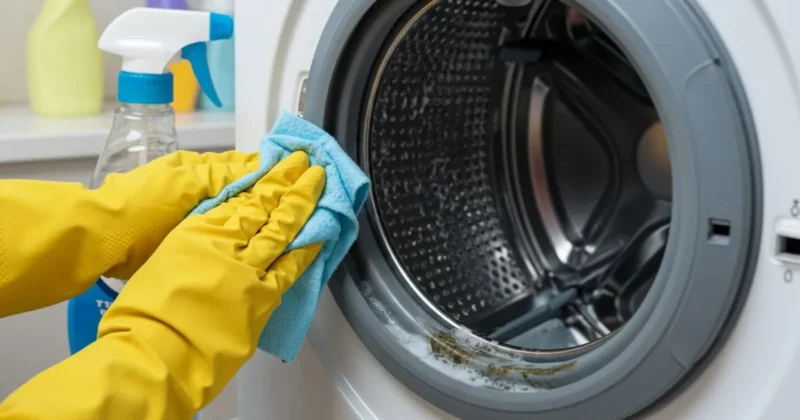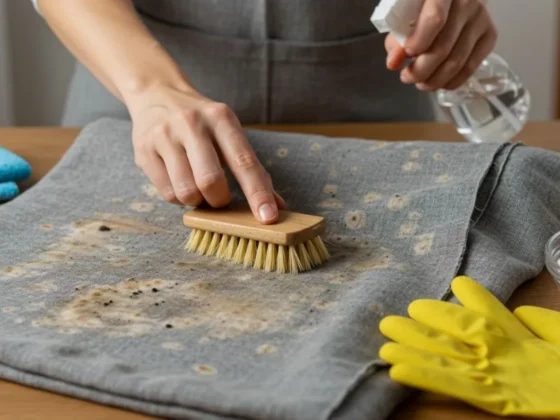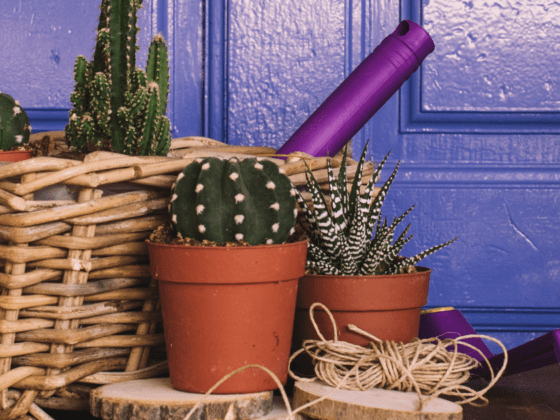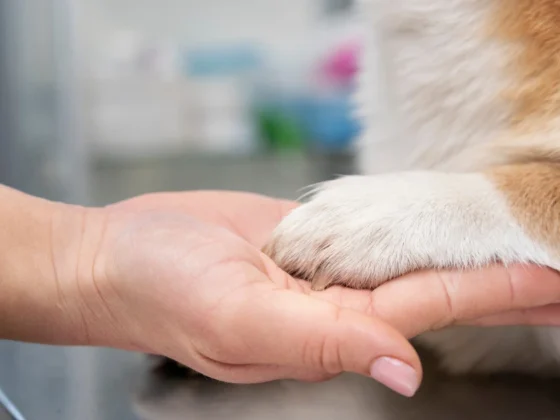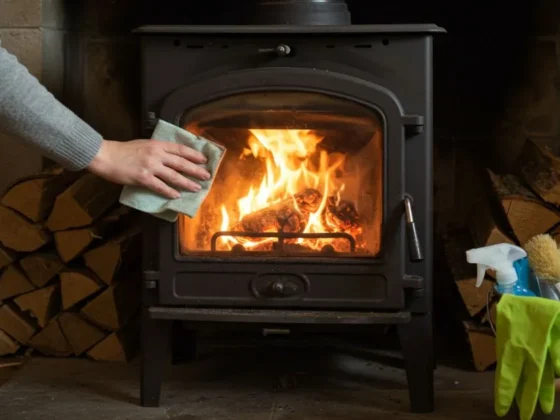It’s important to know how to clean your washing machine seal. A dirty seal can cause mold, mildew, and bad smells. This can lower the quality of your wash. To keep your washer working well, it’s key to clean the seal properly.
Cleaning your washing machine seal is easy with the right tools and steps. By following a simple guide, you can make sure your washer runs smoothly. Knowing how to clean the seal helps your appliance last longer.
What You Should Know About Your Washing Machine Seal ?
Before you start cleaning your washing machine’s rubber seal, it’s key to know its role. The seal, made of rubber, keeps water from leaking during the wash. It’s found between the door and the drum, making sure water stays inside.
It’s important to clean the seal regularly to stop mold and mildew buildup. Knowing how to clean it helps you spot when it needs attention. Look for mold or a bad smell coming from your washer.
What is a washing machine seal ?
A washing machine seal is a rubber gasket. It fits between the door and the drum. Its main job is to keep water from leaking out during the wash.
Why cleaning the seal is important
Cleaning the seal is key to stop mold and mildew. This prevents bad smells and damage to your washer. Regular cleaning also makes your washer last longer.
Signs your seal needs cleaning
Here are some signs your seal needs a clean:
- Visible mold or mildew on the seal
- An unpleasant smell emanating from your washer
- Water leaks during the wash cycle
Understanding the seal’s role and learning to clean it helps keep your washer running well. It also makes it last longer.
Common Problems with Dirty Washing Machine Seals
Not knowing how to clean rubber seal on washing machine can cause many issues. A dirty seal can lead to mold and mildew, causing bad smells. This can also harm the health of those using it. You might find your washer isn’t working as well, leading to higher energy costs and possible breakdowns.
Some common problems with dirty seals include:
- Mold and mildew buildup
- Unpleasant odors
- Reduced washing machine efficiency
- Higher energy bills
- Potential appliance malfunction
To avoid these issues, it’s key to learn how to clean rubber seal on washing machine. Make it a regular part of your maintenance routine. This way, you can extend your washer’s life and keep it efficient.
Regular cleaning stops mold and mildew from growing. It’s hard to get rid of once it starts. By keeping up with cleaning, you can keep your washer working well and avoid expensive fixes later.
What You Need to Get the Job Done
To clean your washing machine seal right, you need the right tools and materials. You’ll need water and white vinegar, baking soda, a soft brush, and rubber gloves. Having these items makes cleaning safer and more effective.
For cleaning solutions, you can mix natural and commercial cleaners. A mix of water and white vinegar can remove dirt and grime. Baking soda helps absorb odors and moisture.
Cleaning Solutions and Products
- Water and white vinegar solution
- Baking soda
- Soft brush
- Rubber gloves
Tools Needed
You’ll also need basic tools for cleaning. A soft brush helps scrub away dirt, and rubber gloves protect your hands from chemicals.
Safety Equipment
When cleaning your washing machine seal, safety is key. Wear rubber gloves and work in a well-ventilated area to avoid inhaling fumes.
| Tool | Description |
|---|---|
| Soft brush | Gently scrub away dirt and debris |
| Rubber gloves | Protect hands from harsh chemicals |
| Water and white vinegar solution | Remove dirt and grime from the seal |
Preparing Your Washing Machine for Cleaning
To clean your washing machine’s rubber seal, start by getting your machine ready. This is key for a successful clean. Open the washer door after the last cycle to dry it out. This step stops moisture from building up, making cleaning easier.
Here are some steps to prepare your washing machine:
- Leave the washer door open to dry the interior and seal
- Check the user manual for specific instructions on preparing your washing machine for cleaning
- Remove any visible debris or dirt from the seal and surrounding areas
By doing these steps, you’re on your way to cleaning your washing machine’s rubber seal. Always check your user manual for the right way to prepare your machine. This ensures you’re taking care of your washing machine and making it last longer.
| Step | Description |
|---|---|
| 1 | Leave the washer door open to dry the interior and seal |
| 2 | Check the user manual for specific instructions |
| 3 | Remove any visible debris or dirt from the seal and surrounding areas |
By following these simple steps, you’ll get your washing machine ready for cleaning. You’ll also learn how to clean the rubber seal effectively.
How to Clean Washing Machine Seal Effectively
To keep your washing machine in good shape, it’s key to learn how to clean the rubber seal. Regular cleaning stops mold, mildew, and debris from building up. This prevents problems.
Before you start cleaning, check the seal for damage or wear. This will help you choose the right cleaning method.
Initial Inspection
Look for mold, mildew, or debris on the seal. Check for cracks or tears. Note any areas needing extra care.
Basic Cleaning Method
For a basic clean, use a soft brush and a water and white vinegar mix. Here’s how:
- Mix 1 cup of water with 1 cup of white vinegar in a bowl.
- Dip a soft brush into the solution and gently scrub the seal.
- Rinse the brush and wipe away any debris or soap residue.
Deep Cleaning Technique
For a deeper clean, use baking soda for tough stains or debris. Here’s how:
- Sprinkle baking soda liberally over the seal.
- Let it sit for 30 minutes to an hour.
- Use a soft brush to scrub away any stains or debris.
- Rinse the brush and wipe away any remaining baking soda or debris.
By following these steps, you can effectively clean your washing machine’s rubber seal. This keeps your appliance working well.
| Cleaning Method | Materials Needed | Steps to Follow |
|---|---|---|
| Basic Cleaning | Soft brush, water, white vinegar | Mix water and vinegar, scrub seal, rinse brush |
| Deep Cleaning | Baking soda, soft brush | Sprinkle baking soda, let sit, scrub away stains, rinse brush |
Removing Stubborn Mold and Mildew
Learning how to clean your washing machine seal means tackling mold and mildew. These can be tough to get rid of. But, with the right steps, it’s easier. First, make a paste with baking soda and water and apply it to the moldy area. Let it sit overnight, then rinse it off.
Baking soda is great for cleaning and removing odors. For tougher spots, mix equal parts water and white vinegar in a spray bottle. Spray it on, wait 30 minutes, and then wipe it clean.
To avoid mold and mildew, clean regularly. Here are some tips:
- Leave the washing machine lid open after use to improve ventilation
- Regularly clean the seal with a mixture of soap and warm water
- Check and replace the seal if it’s damaged or showing signs of wear
By following these steps and tips, you can remove mold and mildew from your washing machine seal. This ensures a clean and fresh wash. Always remember to maintain your washing machine to prevent future buildup and keep it running well.
| Method | Ingredients | Instructions |
|---|---|---|
| Baking Soda Paste | Baking soda, water | Apply paste to affected area, let sit overnight, rinse |
| Vinegar Solution | White vinegar, water | Spray solution onto affected area, let sit for 30 minutes, wipe clean |
Dealing with Tough Stains and Residue
When you learn to clean your seal washing machine, you might face tough stains and residue. These can come from detergent, fabric softener, or other substances. To tackle these, try using natural cleaners like lemon juice or vinegar to break down and remove the stains.
For really tough stains, commercial cleaners can work well. But use them carefully to avoid harming the seal. Always follow the instructions and take safety precautions. If the stains are hard to get rid of, mix natural and commercial cleaners.
Natural Cleaning Solutions
- Lemon juice: Apply lemon juice directly to the stain and let it sit for a few minutes before wiping clean.
- Vinegar: Mix equal parts water and vinegar in a spray bottle and spray onto the stain. Let it sit for a few minutes before wiping clean.
Commercial Cleaners
Commercial cleaners like OxiClean or Shout can tackle tough stains. But make sure to follow the instructions and test a small area first. This ensures the cleaner won’t damage the seal.
| Commercial Cleaner | Instructions |
|---|---|
| OxiClean | Apply directly to the stain, let sit for 5-10 minutes, then wipe clean. |
| Shout | Apply directly to the stain, let sit for 5-10 minutes, then wipe clean. |
By following these tips and using the right cleaning solutions, you can effectively deal with tough stains and residue when learning how to clean seal washing machine.
Preventing Future Seal Contamination
To keep your washing machine running well, it’s important to maintain it regularly. Learning how to clean the rubber seal is key. Simple daily and weekly tasks can help avoid mold, mildew, and residue buildup.
For daily maintenance, just leave the washer door open after use. This lets the interior dry. Also, check the seal for mold or mildew signs. Early detection can stop bigger problems.
Daily Maintenance Tips
- Leave the washer door open after use to promote drying
- Regularly inspect the seal for signs of mold or mildew
- Wipe down the seal and surrounding areas with a dry cloth
Weekly Cleaning Routine
For weekly cleaning, run a cycle with a washing machine cleaner or water and vinegar. This keeps the seal and washer interior clean. Following these tips and learning to clean the rubber seal can make your washer last longer and work better.
Extending Your Washing Machine Seal’s Lifespan
To keep your washing machine seal lasting longer, it’s key to clean it regularly. Doing so helps avoid damage and extends the life of your machine’s parts.
Here are some tips to help your washing machine seal last longer:
- Regularly inspect and clean the seal to prevent mold and mildew buildup
- Avoid using harsh chemicals that can damage the rubber seal
- Follow the manufacturer’s instructions for cleaning and maintenance
By following these tips, you can extend your washing machine seal’s life. This will also save you from expensive repairs. Always check your washing machine’s user manual for specific cleaning and maintenance instructions.
| Tip | Description |
|---|---|
| Regular Cleaning | Regularly clean the seal to prevent mold and mildew buildup |
| Harsh Chemicals | Avoid using harsh chemicals that can damage the rubber seal |
| Manufacturer’s Instructions | Follow the manufacturer’s instructions for cleaning and maintenance |
By taking these steps, you can extend your washing machine seal’s life. Learning how to clean your rubber seal is simple and effective. It helps maintain your washing machine and prevents costly repairs.
Troubleshooting Common Seal Issues
Learning how to clean your washing machine seal is key. You might find damage or wear while cleaning. Look for cracks, tears, or significant wear that could let water leak.
Regular cleaning and maintenance can make your seal last longer. But, if you see cracks, tears, or a lot of wear, it might be time for a new one.
- Cracks or tears in the seal
- Significant wear or fraying
- Leaks or water damage around the seal
Spotting these signs early can save your washing machine. Always clean and maintain it as the maker suggests. This keeps your seal working well for longer.
| Issue | Solution |
|---|---|
| Cracks or tears in the seal | Replace the seal |
| Significant wear or fraying | Replace the seal or consider a repair kit |
| Leaks or water damage around the seal | Inspect and clean the seal, replace if necessary |
By fixing common seal problems and following this guide, you can keep your washing machine in top shape.
Safety Precautions When Cleaning
When cleaning your washing machine seal, safety is key. It’s important to be careful and detailed to avoid accidents. Always put your safety and your washing machine’s life first.
First, handle chemicals with care. Wear gloves and work in a well-ventilated area when cleaning your seal. This prevents harm from harsh chemicals. Also, make sure the washer is unplugged to avoid electrical accidents.
Chemical Handling
Always follow the chemical instructions carefully. Use the right amount and don’t mix different cleaners, as it can release toxic fumes. If unsure, check the user manual or ask a professional for help.
Electrical Safety
Electrical safety is crucial when cleaning your washing machine seal. Never clean while the washer is running or plugged in. This can cause serious shock or even a fire. Always unplug and wait a few minutes before cleaning.
By following these safety tips, you can clean your washing machine seal safely and effectively. Remember, your safety and the longevity of your machine are important for a clean laundry experience.
FAQ
What is a washing machine seal ?
The washing machine seal is a rubber part. It stops water from leaking during the wash cycle.
Why is cleaning the seal important ?
Cleaning your washing machine seal keeps it working well. A dirty seal can cause mold, mildew, and bad smells. This can lower the quality of your wash.
What are the signs that my seal needs cleaning ?
If you see mold, mildew, or a bad smell from your washer, it’s time to clean the seal.
What are the common problems with a dirty washing machine seal ?
A dirty seal can cause mold and mildew. This leads to bad smells and can harm your health. It also makes your washer less efficient, raising your energy bills and possibly causing it to break down.
What tools and materials do I need to clean the washing machine seal ?
You’ll need water and white vinegar, baking soda, a soft brush, and rubber gloves for safety.
How do I prepare my washing machine for cleaning the seal ?
To prepare, leave the washer door open after the last cycle. This dries the interior and seal. It’s key to avoid moisture buildup, making cleaning easier and more effective.
How do I effectively clean the washing machine seal ?
Start by checking for mold, mildew, or debris. Use a soft brush and a water and vinegar mix to gently scrub the seal. For a deeper clean, use baking soda and let it sit before rinsing.
How do I remove stubborn mold and mildew from the seal ?
Make a paste from baking soda and water and apply it to the mold. Let it sit overnight then rinse. Good ventilation and regular cleaning can also prevent mold and mildew.
How do I deal with tough stains and residue on the seal ?
Use lemon juice or vinegar for tough stains and residue. Commercial cleaners work too, but use them carefully to avoid damage. In tough cases, you might need a professional.
How can I prevent future seal contamination ?
To prevent contamination, maintain your washer daily. Leave the door open after use and check the seal for mold or mildew. Also, clean it weekly with a washing machine cleaner or a vinegar mix.
How can I extend the lifespan of my washing machine seal ?
Clean your seal regularly and maintain it properly. Avoid harsh chemicals that can damage the rubber to extend its life.
How can I identify damage to my washing machine seal, and when should I replace it ?
Look for cracks, tears, or significant wear on the seal. If it’s damaged, it can’t stop leaks. Replacing it when needed can prevent water damage and washer malfunctions.
What safety precautions should I take when cleaning the washing machine seal ?
Always handle chemicals carefully and wear gloves when cleaning. Make sure the washer is unplugged before starting any cleaning process.


